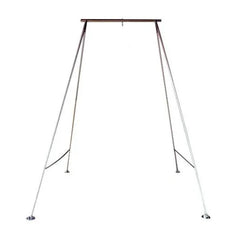Aerial arts are creative, fun, and challenging, no matter what your skill level or discipline may be. And as we all know, the practice also comes with a certain degree of risk. But there are many things we can do to mitigate that risk, and checking up on our equipment on a regular basis is one of them.
Whether you’re just beginning to acquire your own personal gear, or if you’re running an aerial studio, it’s important to keep in mind some key tips to care for and maintain your aerial equipment. While this is by no means a comprehensive list, it can start you off on the right foot with a few components that might already be in your current inventory.
Carabiners
- Take extra precautions not to drop your carabiner, or any metal equipment, especially from a great height.
- If you travel, you might even consider a travel case for your hardware to ensure its integrity.
- Always use your carabiners as directed by the manufacturer. Never load them incorrectly!
- Check for wear every time you plan to use your carabiner. Always ensure that the closure is functioning properly.
- Any signs of deformations or cracks constitute an immediate replacement.
Aerial Fabric
Photo by @heart_ofan_aerialist of our Sunset Ombre Aerial Fabric
- Aerial fabric should be inspected regularly for large tears or rips that can show up due to heavy use. These can result from students wearing the wrong type of clothing to class (jewelry, velcro, long nails, etc.). Something as small as a stud earring or wedding ring can snag a fabric.
- Fabric snags or puncture holes are a part of normal wear and tear over time, especially in a studio setting. Holes under dime size are not a cause for concern, and nylon tricot is run-resistant. However, small holes can be mended if desired and monitored going forward.
- Not all tears mean that the fabric needs to be replaced, and when a fabric has larger holes, sometimes it can be trimmed to create a shorter silk or sling.
- If you use a Rescue 8 or suspend your fabric directly from carabiners, it’s a great idea to regularly take them off, undo any knots, and make sure there are no holes inside. There have been cases of holes developing in aerial silk knots and Figure 8s.
- While aerial fabric can easily be washed, there are times when it does get stained by overuse and should be replaced for aesthetic reasons.
Swivels
- Not all aerialists use a swivel, but be sure to check yours if you do!
- Make sure it always spins smoothly and does not catch.
- Also check for wear, cracks, deformation, and corrosion.
- As a general rule, replace your swivel if it has wear greater than one millimeter.
Round Slings
- Check your round slings for wear and tear thoroughly.
- The manufacturer’s load limits and identification tags need to remain intact and visible.
- If the cover is worn through and showing cord, it’s definitely time to replace.
- Round slings should also be retired if they have any burns, holes, or tears.
There may be many other types of equipment you use that are not listed here. Make sure to inspect every piece of equipment you use to ensure happy flying!
Uplift Active wishes you safe and happy aerial adventures! We are here for you should you have equipment questions, and shop Uplift Active Aerial Equipment if you need to update your own aerial inventory!






Leave a comment